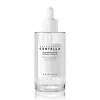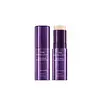What's inside
What's inside
 Key Ingredients
Key Ingredients

 Benefits
Benefits

 Concerns
Concerns

No concerns
 Ingredients Side-by-side
Ingredients Side-by-side

Water
Skin ConditioningButylene Glycol
HumectantNiacinamide
SmoothingGlycerin
HumectantTranexamic Acid
Astringent1,2-Hexanediol
Skin ConditioningBetaine
HumectantCentella Asiatica Extract
CleansingZea Mays Starch
AbsorbentXanthan Gum
EmulsifyingMicrocrystalline Cellulose
AbsorbentMannitol
HumectantPanthenol
Skin ConditioningPentylene Glycol
Skin ConditioningEthylhexylglycerin
Skin ConditioningHydroxyethylcellulose
Emulsion StabilisingMadecassoside
AntioxidantAcrylates/C10-30 Alkyl Acrylate Crosspolymer
Emulsion StabilisingArginine
MaskingHydrogenated Lecithin
EmulsifyingXylitylglucoside
HumectantAnhydroxylitol
HumectantXylitol
HumectantGlucose
Humectant3-O-Ethyl Ascorbic Acid
Skin ConditioningLactobacillus Ferment
Skin ConditioningWater, Butylene Glycol, Niacinamide, Glycerin, Tranexamic Acid, 1,2-Hexanediol, Betaine, Centella Asiatica Extract, Zea Mays Starch, Xanthan Gum, Microcrystalline Cellulose, Mannitol, Panthenol, Pentylene Glycol, Ethylhexylglycerin, Hydroxyethylcellulose, Madecassoside, Acrylates/C10-30 Alkyl Acrylate Crosspolymer, Arginine, Hydrogenated Lecithin, Xylitylglucoside, Anhydroxylitol, Xylitol, Glucose, 3-O-Ethyl Ascorbic Acid, Lactobacillus Ferment
Ozonized Sunflower Seed Oil
Skin ConditioningPolyglyceryl-2 Triisostearate
EmulsifyingOctyldodecanol
EmollientCaprylic/Capric Triglyceride
MaskingMacadamia Seed Oil Polyglyceryl-6 Esters Behenate
EmollientEuphorbia Cerifera Wax
Microcrystalline Wax
Emulsion StabilisingBis-Diglyceryl Polyacyladipate-2
EmollientTocopheryl Acetate
AntioxidantButyrospermum Parkii Butter
Skin ConditioningSynthetic Wax
AbrasivePrunus Amygdalus Dulcis Oil
Skin ConditioningRicinus Communis Seed Oil
MaskingPolyethylene
AbrasiveVinyl Dimethicone/Methicone Silsesquioxane Crosspolymer
Borago Officinalis Seed Oil
EmollientTrioctyldodecyl Citrate
EmollientEclipta Prostrata Extract
Skin ConditioningMelia Azadirachta Leaf Extract
Skin ConditioningMelia Azadirachta Flower Extract
Skin ConditioningCoccinia Indica Fruit Extract
Skin ConditioningSolanum Melongena Fruit Extract
Skin ConditioningAloe Barbadensis Flower Extract
EmollientCurcuma Longa Root Extract
MaskingCorallina Officinalis Extract
Skin ConditioningOcimum Sanctum Leaf Extract
Skin ConditioningLupinus Albus Seed Extract
Skin ConditioningDaucus Carota Sativa Root Extract
Skin ConditioningVaccinium Angustifolium Fruit Extract
Skin ProtectingBeta Vulgaris Root Extract
Skin ConditioningBrassica Oleracea Capitata Leaf Extract
Skin ConditioningAlpinia Galanga Extract
Skin ConditioningLactobacillus/Punica Granatum Fruit Ferment Extract
Skin ConditioningLactobacillus/Soybean Ferment Extract
Skin ConditioningOryza Sativa Extract
AbsorbentCitrus Aurantium Bergamia Fruit Oil
MaskingPelargonium Graveolens Flower Oil
MaskingHippophae Rhamnoides Fruit Oil
Skin ProtectingLavandula Angustifolia Oil
MaskingCitrus Aurantium Dulcis Peel Oil
MaskingSimmondsia Chinensis Seed Oil
EmollientAnthemis Nobilis Flower Oil
MaskingSantalum Album Oil
MaskingHydrogenated Lecithin
EmulsifyingSodium Hyaluronate
HumectantBisabolol
MaskingSilica
AbrasiveTocopherol
AntioxidantMoringa Oleifera Seed Oil
EmollientWater
Skin ConditioningSqualane
EmollientBeeswax
Emulsion StabilisingButylene Glycol
Humectant1,2-Hexanediol
Skin ConditioningSorbitan Sesquioleate
EmulsifyingSucrose Tetrastearate Triacetate
EmollientGlycerin
HumectantLactobacillus Ferment
Skin ConditioningSorbitan Stearate
EmulsifyingSorbitan Olivate
EmulsifyingPanthenol
Skin ConditioningSucrose Distearate
EmollientAlcohol
AntimicrobialCaprylyl Glycol
EmollientMadecassoside
AntioxidantMethicone
EmollientGlyceryl Citrate/Lactate/Linoleate/Oleate
EmulsifyingHydrogenated Polyisobutene
EmollientCholesterol
EmollientEthylhexylglycerin
Skin ConditioningCeramide NP
Skin ConditioningAdenosine
Skin ConditioningBifida Ferment Lysate
Skin ConditioningPentylene Glycol
Skin ConditioningLactobacillus/Acerola Cherry Ferment
Skin ProtectingLactobacillus Ferment Lysate
Skin ConditioningLactococcus Ferment
Skin ConditioningLactococcus Ferment Lysate
Skin ConditioningLeuconostoc/Radish Root Ferment Filtrate
AntimicrobialBifida Ferment Filtrate
Skin ConditioningHydrolyzed Collagen
EmollientSaccharomyces Ferment
Skin ConditioningXanthan Gum
EmulsifyingBacillus Ferment
Skin ConditioningDehydroacetic Acid
PreservativeLimonene
PerfumingCitronellol
PerfumingGeraniol
PerfumingLinalool
PerfumingOzonized Sunflower Seed Oil, Polyglyceryl-2 Triisostearate, Octyldodecanol, Caprylic/Capric Triglyceride, Macadamia Seed Oil Polyglyceryl-6 Esters Behenate, Euphorbia Cerifera Wax, Microcrystalline Wax, Bis-Diglyceryl Polyacyladipate-2, Tocopheryl Acetate, Butyrospermum Parkii Butter, Synthetic Wax, Prunus Amygdalus Dulcis Oil, Ricinus Communis Seed Oil, Polyethylene, Vinyl Dimethicone/Methicone Silsesquioxane Crosspolymer, Borago Officinalis Seed Oil, Trioctyldodecyl Citrate, Eclipta Prostrata Extract, Melia Azadirachta Leaf Extract, Melia Azadirachta Flower Extract, Coccinia Indica Fruit Extract, Solanum Melongena Fruit Extract, Aloe Barbadensis Flower Extract, Curcuma Longa Root Extract, Corallina Officinalis Extract, Ocimum Sanctum Leaf Extract, Lupinus Albus Seed Extract, Daucus Carota Sativa Root Extract, Vaccinium Angustifolium Fruit Extract, Beta Vulgaris Root Extract, Brassica Oleracea Capitata Leaf Extract, Alpinia Galanga Extract, Lactobacillus/Punica Granatum Fruit Ferment Extract, Lactobacillus/Soybean Ferment Extract, Oryza Sativa Extract, Citrus Aurantium Bergamia Fruit Oil, Pelargonium Graveolens Flower Oil, Hippophae Rhamnoides Fruit Oil, Lavandula Angustifolia Oil, Citrus Aurantium Dulcis Peel Oil, Simmondsia Chinensis Seed Oil, Anthemis Nobilis Flower Oil, Santalum Album Oil, Hydrogenated Lecithin, Sodium Hyaluronate, Bisabolol, Silica, Tocopherol, Moringa Oleifera Seed Oil, Water, Squalane, Beeswax, Butylene Glycol, 1,2-Hexanediol, Sorbitan Sesquioleate, Sucrose Tetrastearate Triacetate, Glycerin, Lactobacillus Ferment, Sorbitan Stearate, Sorbitan Olivate, Panthenol, Sucrose Distearate, Alcohol, Caprylyl Glycol, Madecassoside, Methicone, Glyceryl Citrate/Lactate/Linoleate/Oleate, Hydrogenated Polyisobutene, Cholesterol, Ethylhexylglycerin, Ceramide NP, Adenosine, Bifida Ferment Lysate, Pentylene Glycol, Lactobacillus/Acerola Cherry Ferment, Lactobacillus Ferment Lysate, Lactococcus Ferment, Lactococcus Ferment Lysate, Leuconostoc/Radish Root Ferment Filtrate, Bifida Ferment Filtrate, Hydrolyzed Collagen, Saccharomyces Ferment, Xanthan Gum, Bacillus Ferment, Dehydroacetic Acid, Limonene, Citronellol, Geraniol, Linalool
 Reviews
Reviews

Ingredients Explained
These ingredients are found in both products.
Ingredients higher up in an ingredient list are typically present in a larger amount.
1,2-Hexanediol is a synthetic liquid and another multi-functional powerhouse.
It is a:
- Humectant, drawing moisture into the skin
- Emollient, helping to soften skin
- Solvent, dispersing and stabilizing formulas
- Preservative booster, enhancing the antimicrobial activity of other preservatives
Butylene Glycol (or BG) is used within cosmetic products for a few different reasons:
Overall, Butylene Glycol is a safe and well-rounded ingredient that works well with other ingredients.
Though this ingredient works well with most skin types, some people with sensitive skin may experience a reaction such as allergic rashes, closed comedones, or itchiness.
Learn more about Butylene GlycolEthylhexylglycerin (we can't pronounce this either) is commonly used as a preservative and skin softener. It is derived from glyceryl.
You might see Ethylhexylglycerin often paired with other preservatives such as phenoxyethanol. Ethylhexylglycerin has been found to increase the effectiveness of these other preservatives.
Glycerin is already naturally found in your skin. It helps moisturize and protect your skin.
A study from 2016 found glycerin to be more effective as a humectant than AHAs and hyaluronic acid.
As a humectant, it helps the skin stay hydrated by pulling moisture to your skin. The low molecular weight of glycerin allows it to pull moisture into the deeper layers of your skin.
Hydrated skin improves your skin barrier; Your skin barrier helps protect against irritants and bacteria.
Glycerin has also been found to have antimicrobial and antiviral properties. Due to these properties, glycerin is often used in wound and burn treatments.
In cosmetics, glycerin is usually derived from plants such as soybean or palm. However, it can also be sourced from animals, such as tallow or animal fat.
This ingredient is organic, colorless, odorless, and non-toxic.
Glycerin is the name for this ingredient in American English. British English uses Glycerol/Glycerine.
Learn more about GlycerinHydrogenated Lecithin is created from the hydrogenation of lecithin (a group of phospholipids). Hydrogenation is a chemical reaction between hydrogen and another element.
This ingredient is an emollient and emulsifier. As an emollient, it helps soften skin by trapping moisture within. As an emulsifier, it prevents oil and water ingredients from separating.
Lactobacillus Ferment is created by fermenting the Lactobacillus bacteria. It helps keep our skin's natural barrier and microbiome healthy.
Studies show lactobacillus ferment to be effective at repairing the skin barrier. Having a healthy skin barrier helps keep your skin healthy and hydrated. It also protects against bad bacteria.
As a probiotic/prebiotic/postbiotic, Lactobacillus ferment can help regular our natural biome. In fact, one study found a lack of diversity in our natural skin biome can trigger acne.
Learn more about Lactobacillus FermentMadecassoside comes from the super popular skin-soothing ingredient, Centella asiatica. It is one of four active compounds found in the extract of Centella Asiatica.
Madecassoside has antioxidant, anti-inflammatory, and hydrating properties. It contains fatty acids, amino acids, beta-carotene, and phytochemicals.
One study found using Madecassoside with ascorbic acid helped reduce the signs of aging and improved skin hydration.
Learn more about MadecassosidePanthenol is a common ingredient that helps hydrate and soothe the skin. It is found naturally in our skin and hair.
There are two forms of panthenol: D and L.
D-panthenol is also known as dexpanthenol. Most cosmetics use dexpanthenol or a mixture of D and L-panthenol.
Panthenol is famous due to its ability to go deeper into the skin's layers. Using this ingredient has numerous pros (and no cons):
Like hyaluronic acid, panthenol is a humectant. Humectants are able to bind and hold large amounts of water to keep skin hydrated.
This ingredient works well for wound healing. It works by increasing tissue in the wound and helps close open wounds.
Once oxidized, panthenol converts to pantothenic acid. Panthothenic acid is found in all living cells.
This ingredient is also referred to as pro-vitamin B5.
Learn more about PanthenolPentylene glycol is typically used within a product to thicken it. It also adds a smooth, soft, and moisturizing feel to the product. It is naturally found in plants such as sugar beets.
The hydrophilic trait of Pentylene Glycol makes it a humectant. As a humectant, Pentylene Glycol helps draw moisture from the air to your skin. This can help keep your skin hydrated.
This property also makes Pentylene Glycol a great texture enhancer. It can also help thicken or stabilize a product.
Pentylene Glycol also acts as a mild preservative and helps to keep a product microbe-free.
Some people may experience mild eye and skin irritation from Pentylene Glycol. We always recommend speaking with a professional about using this ingredient in your routine.
Pentylene Glycol has a low molecular weight and is part of the 1,2-glycol family.
Learn more about Pentylene GlycolWater. It's the most common cosmetic ingredient of all. You'll usually see it at the top of ingredient lists, meaning that it makes up the largest part of the product.
So why is it so popular? Water most often acts as a solvent - this means that it helps dissolve other ingredients into the formulation.
You'll also recognize water as that liquid we all need to stay alive. If you see this, drink a glass of water. Stay hydrated!
Learn more about WaterXanthan gum is used as a stabilizer and thickener within cosmetic products. It helps give products a sticky, thick feeling - preventing them from being too runny.
On the technical side of things, xanthan gum is a polysaccharide - a combination consisting of multiple sugar molecules bonded together.
Xanthan gum is a pretty common and great ingredient. It is a natural, non-toxic, non-irritating ingredient that is also commonly used in food products.
Learn more about Xanthan Gum